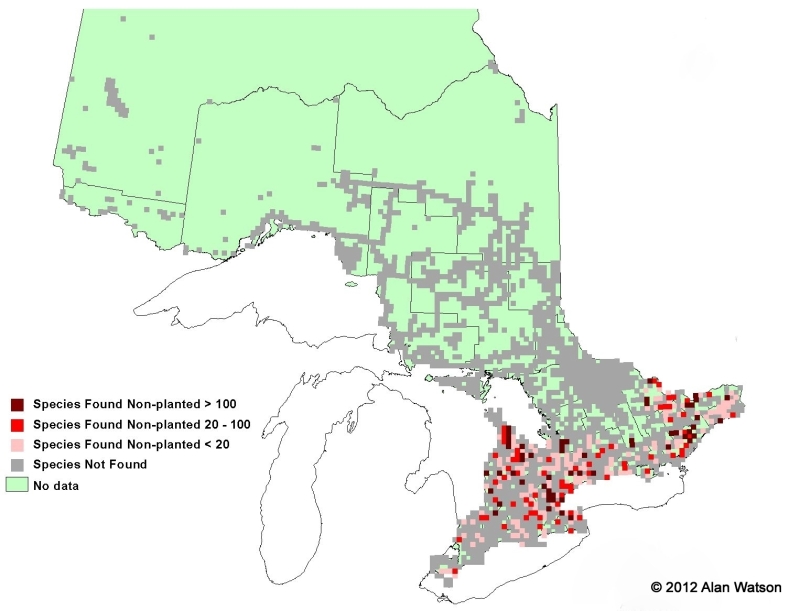Butternut (Juglans cinerea)
This walnut species is in serious decline due to fungus disease known as Canker dieback (Sirococcus clavigignenti-juglandacearum). As a result, the Butternut has been listed as a Nationally Endangered species by Environment Canada. The tree is relatively short-lived, shade-intolerant and found among other tree species such as sugar maple, beech, basswood, black cherry and black walnut. It produces a sticky, oval shaped fruit that contains a nutritious nut that is eaten by birds, squirrels, and other small mammals.
The 5-8 cm long fruit is elongated and pointed at one end. It is sticky and is densely covered in hairs. Photo Sean Fox
The 7-10 leaflets are arranged oppositely and appear almost stalkless. The leaves are hairy underneath, and the terminal leaflet is similar in size to the adjacent leaflets. Photo Sean Fox.
The bark is light gray and becomes more rigid and grooved with age. The ridges of the bark are flat-topped. Photo Sean Fox.

Ontario Tree Atlas map of non-planted Butternut. 1995-1999.